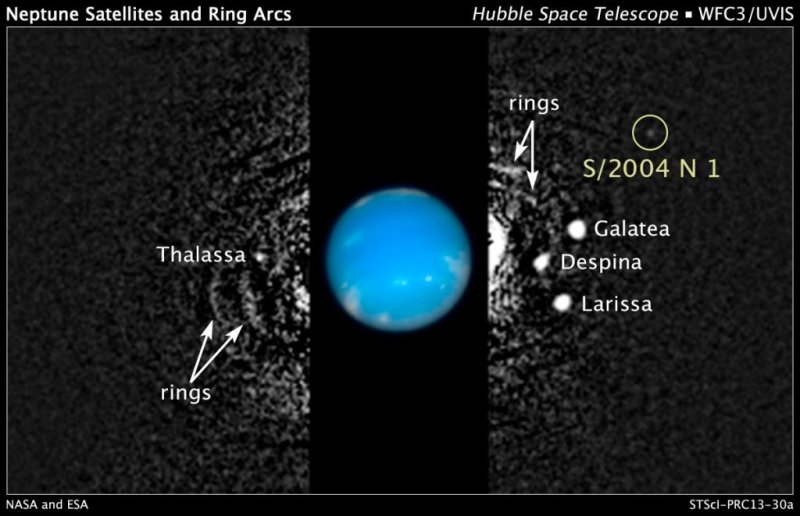NASA's Hubble Space Telescope has captured a new moon orbiting Neptune, the 14th moon known to be circling the giant planet.
The moon, designated S/2004 N 1, is estimated to be no more than 12 miles across, making it the smallest known moon in the Neptunian system.















